Secondary schools in Spain for foreign students - 3 yo
- A full guide of Spanish schools
- Specifics of passing mid-level exams
- Duration of the school year in the secondary school in Spain, holidays
- Cost of secondary education in Spain
- Features of teaching children in high school educational institutions in Spain
- Types of Institutions That Provide Secondary Education in Spain
- Specifics of the language of instruction in secondary schools in Spain
- Typical Afternoon Schedule in Secondary School in Spain
- Literature and references
This content was developed and approved with active participation of Mary Bousted.
In the process of preparing the material, we referenced the following sources:
- https://www.internations.org/spain-expats/guide/education
- https://www.timeshighereducation.com/student/where-to-study/study-in-spain.
-
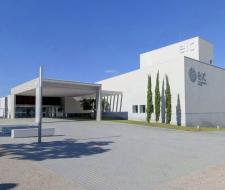
-

-
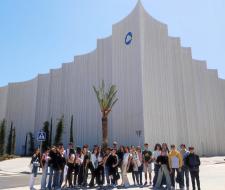
-
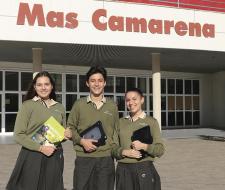
-
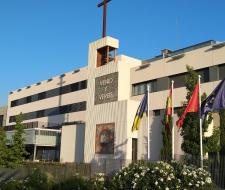
-

-
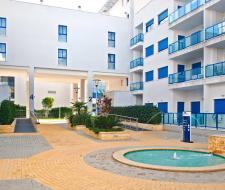
-

-
 In 2023 - 82% of A Level students achieved A* - C
In 2023 - 82% of A Level students achieved A* - C SpainMurciaCurrently watching: 1
SpainMurciaCurrently watching: 1 -
 In 2023 - 83% of A Level students achieved A* - C
In 2023 - 83% of A Level students achieved A* - C SpainAlicanteCurrently watching: 1
SpainAlicanteCurrently watching: 1
Education in Spain has gained popularity among foreign students due to excellent climatic conditions, opportunities to pursue education in top universities abroad. Moreover, Spanish secondary schools provide inexpensive and high-quality courses.
SMAPSE offers 20 best Spanish secondary schools, which invite foreign students for studying. Thanks to our search bar and dedicated schools descriptions, including tuition fees and student feedback, you can easily make the right choice.
Spain is recognized as a popular destination among foreign students due to the emphasis on comprehensive development of each student in the top local schools. Educational process stipulates an emphasis on individual work with students, assisting them in making a decision on future university specialization and profession. By entering the best schools in Spain, students are provided with the opportunity to study foreign languages.
Alternative destinations
A full guide of Spanish schools
Secondary Schools in Spain
Spain offers a unique educational structure for students, which can be broken down as follows:
-
Initial stage (6 - 12 years): At age 6, children begin studying at primary schools, in which education lasts for six years.
-
Middle Schools in Spain (12 - 16 years): Upon turning 12, students transition to secondary education which spans four years.
-
Full secondary level (Bachillerato, 16-18 of age): The students aged 16 years old and above can delve into more specialized studies, preparing for their chosen professions under the "Formacion Profesional". This school stage culminates upon achieving the age of 18 years old.
Features of Secondary Schools in Spain
Also in Spain there are the colegios concertados, which are founded by the church. Despite their religious origins, students are provided with the opportunity to obtain a secular-style education. Educational process stipulates studying of general subjects together with religious disciplines. Also teaching focuses on language preparation. Upon reaching 12 years old, students begin to pursue secondary education, with a duration of four years.
Furthermore, Spain is a home to the best schools which offer international curriculums. Foreign students are provided with the opportunity to enter private schools which adhere to the British or the American-Spanish models. The schools comply with international academic standards, providing students with globally recognized certificates such as the International Baccalaureate or A-Level diplomas.
Upon completing compulsory courses, foreign students can take a professional program or pass specialized tests to continue education under the Bachillerato program. Comparable to grades 10-11 in the American education system, the Bachillerato stipulates intensive studying of core disciplines during three years.
If you are choosing a Spanish high school, you are provided with a choice of:
-
Local system: Spanish Bachillerato
-
International: European or American system
Stages of secondary education in Spain
|
Age of students |
Stage of education |
|
3-5 |
Preschool (infantil) education |
|
6-11 |
Primary (Primaria) education |
|
12-15 |
Secondary education |
|
16-18 |
Senior classes of secondary education (Bachillerato) |
While studying the fourth year of secondary education, students are required to choose one of three curriculums:
-
Natural science;
-
Social and Humanities;
-
Artistic.
While studying comes to completion in high school, the educational process makes an emphasis on disciplines, required for successful entering universities or professional colleges.
To sum up, Spain provides diverse and high quality academic opportunities for local and foreign students.

What makes Spanish schools special among all schools in the world? Why do parents choose primary and secondary schools in Spain?
There are many reasons. Among others, it is a complete immersion in the Spanish language and culture in the family environment. The country has the strategic position in the south of Europe. Moreover, because of the outstanding rankings of educational institutions. Some people are attracted to Spanish school because of a rich historical and artistic heritage, warm and hospitable people, colorful holidays, bright cities, unforgettable traditions and folklore!
What exams are taken to complete secondary education?
Upon completing the Bachillerato, which is the last stage of secondary education, students pass compulsory exams such as Selectividad or EvAU (Evaluación para el Acceso a la Universidad). The results of exams allow teachers to assess students' knowledge and determine their ability to enroll in university. Exams are taken in disciplines such as mathematics, literature, chemistry, history and foreign languages. EvAU scores are considered important while applying to universities and determine which programs and institutions will be available to students.
What international diplomas can be obtained in Spain?
In Spain, foreign students are provided with the opportunity to obtain internationally recognized diplomas. Many schools conduct studying under the IB programs that provide higher academic standards with a global recognition. Also, Spain is a member of the European Union, and European diplomas obtained in Spain are generally recognized in other EU member states, opening the door to international careers and studies.
How can national and regional languages affect studying in Spain?
Spain is featured by the regions where national or regional languages, such as Catalan, Basque and Galician, have the status of official languages. As a result, teaching is conducted in Spanish and a corresponding local language, and pupils are obliged to learn the local language. This contributes to the preservation and promotion of the cultural and linguistic diversity of the different regions of Spain.
What financial aid opportunities are available to students?
Foreign students can participate in various financial aid programs. There are government scholarships and grants for talented students, as well as support programs for low-income students. Moreover, many universities and organizations offer their own scholarships and financial aid. Spanish universities collaborate with global ones, by participating in the Erasmus Mundus initiative.
What is the role of standardized tests in secondary education in Spain?
In Spain, the educational process stipulates conducting standardized tests, aimed at assessing academic achievement of each student. Based on test results, the teacher obtains a full view of students' knowledge and skills in different disciplines. In addition, the educational institutions identify areas for improvement. Pay attention that test results are reviewed together with other assessments, as there are other types of work, used for assessment of students' success.
What are the main levels of secondary education in Spain?
Secondary education consists of two main stages: compulsory education (ESO) and bachillerature (Bachillerato). Local and foreign students aged from 12 to 16 years old take ESO, which is compulsory. Bachillerature lasts for 2 years. Bachillerature stipulates a more specialized studying, designed for students aged 16 to 18 years old.
Can international students study in a public school in Spain?
Yes, if your parents are residents in Spain, you can study in a public school. It is necessary to provide a residence permit, a work visa, or citizenship.
What is the difference between private schools and public schools?
The core differences between these educational institutions are concerned with funding, management, structure, educational programs, and additional services. Public schools are predominantly designed for children living near school. Private schools are featured by more flexible admission requirements. So, foreign students can enter them.The number of students is smaller in private schools, which can encourage more individualized learning.
What is the advantage of a private school in Spain?
Private schools are distinguished by flexibility in developing educational processes and studying approaches. They can make an emphasis on specific disciplines, teaching approaches and additional educational programs, providing high quality of education.
What subjects are studied in the ESO phase?
Under ESO, pupils study diverse disciplines. Compulsory subjects include Spanish language and literature, mathematics, geography and history, English, and physical education. Also students have a choice of several electives, which comply with their goals and future curricula. This approach guarantees diversity in the studying programs, allowing students to improve their skills.
Specifics of passing mid-level exams
Educational process in Spanish schools stipulates regular conducting tests. So, already in primary school, students at the end of each trimester take mini-exams in all compulsory disciplines. However, each teacher can arrange tests, controls and cuts when he sees fit, which does not allow students to indulge in laziness. At the end of each school year, schoolchildren take final transfer exams, which include not only compulsory disciplines, but also all other (additional), the results of which are summed up. A board of teachers meets to make a decision on each student's transfer to the next grade. They consider the progress of students in all aspects of studying.
Upon graduation from secondary school, final exams are conducted. If a student fails, he will be left for the second year. However, this situation can repeat no more than twice until achieving the age of 16. In the case of passing the exams, graduates are awarded a certificate of compulsory secondary education. With this diploma a student can enroll in the upper classes of Bachillerato.
Assessment system stipulates grades on a scale of 10 points: below 5 points – unsatisfactory (SS or D), 5 points – satisfactory (S), 6 points – good (BI), from 7 to 8 points – excellent (NT), from 9 and above – excellent (SB), and 10 points means an outstanding result (MH).
Duration of the school year in the secondary school in Spain, holidays
The academic year begins in mid-September and finishes in mid-June, consisting of three trimesters (11 weeks each):
- First trimester (September – December), followed by a two-week Christmas holiday;
- The second trimester (January-March or April), after which a two-week spring break is stipulated;
- The third trimester (May – mid-June), after which summer vacation lasts for up to 11 weeks.
Cost of secondary education in Spain
In the case of kindergartens and preschool institutions, the tuition fees are stipulated by the location and prestige of the institution. However, it costs less compared to average European prices: from 350 EUR to 500 EUR per month. Pay attention it is necessary to begin the admission process no later than May - later you risk simply not finding places.
The cost of studying at private schools is stipulated by many factors, including location, ranking, etc. Foreign students should be ready to pay between 20,000 EUR to 35,000 EUR per academic year, including accommodation.
One way or another, on our website you can find a convenient list of educational institutions with a set of flexibly adjustable filters. SMAPSE Agency is glad to provide you with a wide range of programs offered by Spanish secondary schools. Having such diverse options, our experienced specialists will assist you in selecting the most suitable Spanish secondary school. Please note that you can leave a request directly on this page, and our professional experts will contact you at a convenient time for you to provide a free consultation.
Features of teaching children in high school educational institutions in Spain
Bachillerato program is studied at a high school. The duration of studying is two years, the program is designed for students aged from 14 to 16 years old. Upon completing studies, graduates are awarded a certificate of complete secondary education. This program is optional for students. However, without this certificate a foreign student cannot apply to the Spanish university. Instead of obtaining higher education, students are provided with the opportunity to pursue professional education in a specialization you are interested in, and then start working.
Among the specialties of Bachillerato itself , there are six main ones: theater (stage) arts, economics, natural sciences, fine arts, humanities and social sciences and technology.
While studying in high school, students are required to take compulsory disciplines: English and Spanish (in the case of studying in Catalonia - also Catalan), history and philosophy, physical education. In addition, students choose two disciplines to study (physics, biology, chemistry, anatomy, etc.). These subjects should be chosen in accordance with the intended specialization at the university, but this is not necessary.
Types of Institutions That Provide Secondary Education in Spain
To date, Spanish secondary schools are classified into three categories:
- state (colegios públicos);
- semi-state (colegios concertados);
- private (colegios privados).
Local residents study at public schools free of charge. Below you can learn disadvantages of studying at public educational institutions:
- In most cases, the technical condition and equipment of state options leaves much to be desired, especially in comparison with private educational institutions;
- since state institutions teach children free of charge, classes are formed quite large, which practically excludes an individual approach of teachers to students;
- Also we can note the high number of children from families with not the highest income, which, of course, adversely affects the discipline and academic performance of the class as a whole.
However, this does not mean that the quality of educational services provided in public educational institutions is lower compared to others. Pay attention that public schools accept only children of Spaniards and citizens who have obtained a residence permit in Spain. In the case of moving to Spain on a permanent basis,a student is not allowed to enter public educational institutions.
The main feature of semi-public schools concerns that they are funded in part either by the Catholic Church or by the State (represented by local authorities). While semi-public schools belong to the church, obtaining secondary education in Spain in most cases does not stipulate compulsory studying of religion or adherence to it. The difference from state institutions is a greater emphasis on the study of foreign languages.
Private educational institutions in Spain can be entered by Spaniards and foreign students. Their popularity has increased among international students. The studying depends on the educational program (academic model of Great Britain, USA, Germany, France and others). However, some disciplines are compulsory under the Spanish educational system. By entering International private boarding schools, students can take the A-Level, International Baccalaureate (IB) and many other programs. The core advantage of studying in this type of educational institution concerns a lower tuition fees while meeting high international academic standards. In the case of studying in British and American schools in Spain, studying is conducted in English. However, pay attention that compulsory Spanish disciplines are studied in Spanish. Private schools invite experienced experts, who are representatives of different countries, to conduct classes. In addition, each teacher has the opportunity to devote the amount of time required to each student in connection with compact study groups.
Specifics of the language of instruction in secondary schools in Spain
It is very important to consider the issue of the language of instruction in more detail – as mentioned earlier, the educational process in Spain can stipulate teaching disciplines in Spanish, Catalan, English and some other foreign languages. For example, in the Basque Country, education is given in the Basque language, but in most cases in regions that have their own language (Valencia, the same Basque Country, Catalonia), Spanish also occupies a significant place in the education system.
International secondary schools which offer the American and British curriculum conduct teaching in English. To enter such an institution, students are required to demonstrate a sufficiently high level of English. Spanish is taught as a first foreign language. For instance, in Catalonia, Catalan is studied as a second foreign language.
Prior to pursuing secondary education, students can take language courses. So, students can improve language skills, which are necessary for entering. In such classes, future students will be able to learn Spanish or English in an unobtrusive form, as well as make the first acquaintance with the culture and traditions of Spain.
Typical Afternoon Schedule in Secondary School in Spain
In the overwhelming majority of primary educational institutions, classes last from 9 am to noon and from 3 to 5 pm with a break for lunch and rest (children's siesta). Many Spaniards go home for lunch, some prefer to dine in the local canteen.
For middle school students, the day begins at half past nine in the morning and lasts until 3 pm. There is also a short lunch break, the duration of which depends on each specific school.
As an interesting fact, Spanish secondary schools organize additional after-school groups that run until 9-10 pm. Engaged in these groups, students can do homework or do some kind of sport. It is not compulsory to attend after-school groups in any educational institution. So, you can practice English in an international British school, and do sports in an appropriate specialized institution. This type of activity does not play a role in overall assessment of a student's performance.
Top 5 best schools in Spain 2026
| 1 | Sotogrande International School |
| 2 | King's College Madrid |
| 3 | International School San Patricio Toledo |
| 4 | Caxton College |
| 5 | Colegio Base CEIAM |
Learning programs-summary information
| Name | Meaning | Equivalent | Min. age | Duration, years |
Next stage | Cost |
|---|---|---|---|---|---|---|
| GCSE | General certificate of secondary education | secondary education (non-accomplished) | 14 | 1–2 | A-Levels | 15,000 USD+ |
| A-Levels | Advanced level | secondary education (accomplished) | 16 | 2 | University | 15,000 USD+ |
| BTEC | Business and Technology Education Board | secondary special education | 14 | 2–3 | University/ work | 15,000 USD+ |
| Oxbridge Preparation | Preparing for Oxford and Cambridge | secondary education (accomplished) | 17 | 1 | University | 15,000 USD+ |
| International Baccalaureate | International baccalaureate | secondary education (accomplished) | 16 | 2 | University | 18,000 USD+ |
| Foundation/ Pathway Year | Preparatory year | admission to the 1st year of university | 17 | 1 | University | 14,000 USD+ |
| NCUK | The Northern consortium | 2 year university | 17,5 | 1 | 2 year University of NCUK | 13,000 USD+ |
| Special Preparation (Medics/Math/Business) | Specialized training | - | 14 | optional | optional | 4,000 USD+ |
| Academic English | Academic English | Language school | 8 + | 6–12 months | School or University | 8,000 USD+ |
Advantages and disadvantages of English schools
| Advantages | Disadvantages |
|---|---|
| The opportunity to enter the best universities in England, USA, Canada, Switzerland, Europe, the world | Expensive |
| High quality of education and academic standards | Strong workload |
| Perfect English after graduation | The need to change the social environment; it takes time to adapt |
| Useful contacts | The difficulty of choosing the most suitable school for the child, requires a qualified specialist |
Top 21 boarding colleges in England 2026
| 1 | Cardiff Sixth Form College |
| 2 | National Mathematics and Science College |
| 3 | Abbey College Cambridge |
| 4 | d'Overbroeck's College |
| 5 | MPW London |
| 6 | CATS Cambridge |
| 7 | Kensington Park |
| 8 | DLD London |
| 9 | King's College St Michael’s |
| 10 | Bellerbys Cambridge |
| 11 | Chelsea Independent College |
| 12 | MPW Cambridge |
| 13 | Bellerbys Brighton |
| 14 | CATS London |
| 15 | St Clare's Oxford |
| 16 | Bishopstrow College |
| 17 | CATS Canterbury |
| 18 | Bellerbys London |
| 19 | Ealing Independent College |
| 20 | Cambridge Tutors College |
| 21 | Abbey Manchester |
